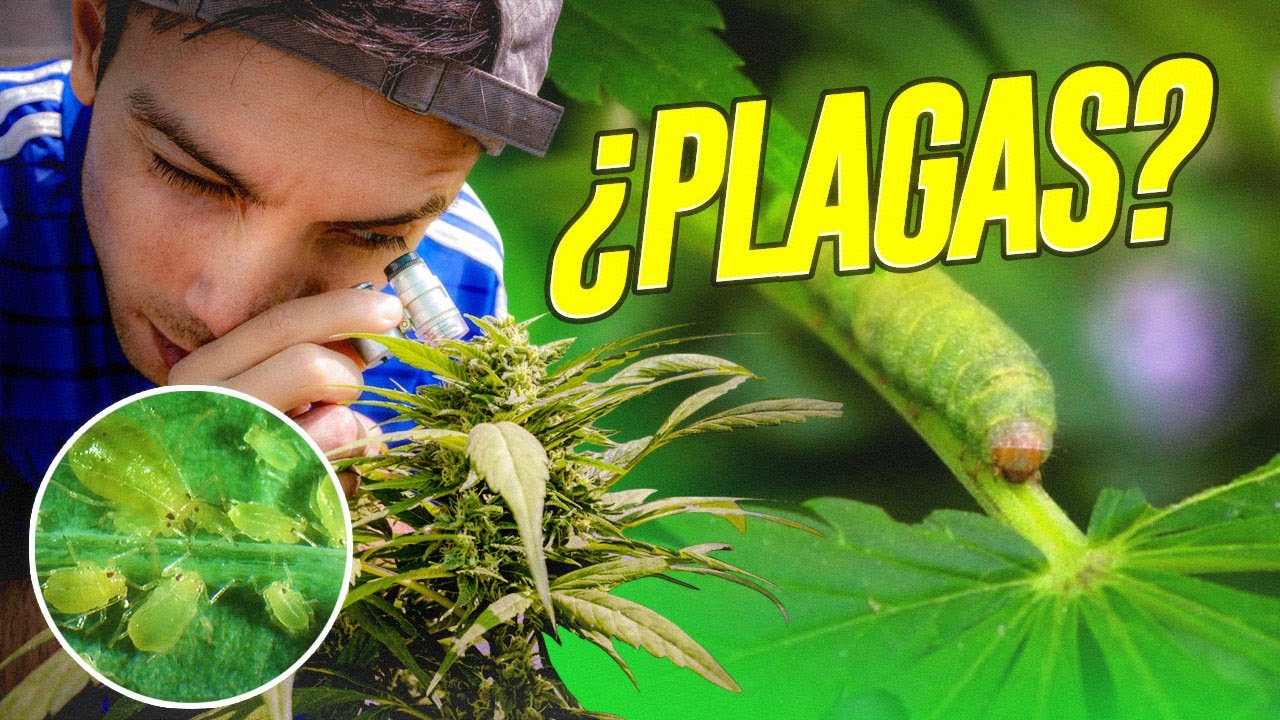1. Introduction to the most common PESTS in Cannabis cultivation
Growing cannabis can be a rewarding experience, but it can also be threatened by various pests. These pests can compromise plant health and affect crop yields. It is critical that growers are able to identify and manage these issues effectively.
Main Pests That Affect Cannabis
- Mites: Spider mites, such as the red mite, are small but harmful, as they feed on leaves and can cause discoloration and premature dropping.
- Thrips: These tiny creatures can cause significant damage by sucking juices out of plants and introducing viruses.
- Defoliating Worms: These types of caterpillars can devour leaves quickly, affecting the photosynthesis process and weakening the plant.
- Fungi: Fungal infections can come in the form of gray mold or powdery mildew, affecting the overall health of plants.
Controlling these pests not only requires proper identification of signs of infestation, but also the implementation of management strategies that are sustainable to maintain crop health. Some measures may include the use of organic insecticides, crop rotation, or even the utilization of natural predators to reduce pest populations.
2. Identification of the most harmful PESTS for your Cannabis plants
The health of your cannabis plants is crucial to obtaining an optimal harvest, and early identification of pests can make the difference between a successful crop and a committed one. Among the most common pests that affect cannabis plants are:
- Mites: These tiny organisms can cause significant damage by feeding on leaves, leaving yellow spots and a characteristic spider web weave.
- Aphids: Aphids are very small insects that cluster on the underside of leaves. Their presence can weaken the plant and cause growth deformities.
- Thrips: These insects are difficult to spot due to their small size. They feed on the leaves, leaving silvery marks and causing abnormal growth.
- Whitefly: Similar to aphids, the whitefly is commonly found on the undersides of leaves and can transmit viral diseases.
Each of these pests has specific symptoms that can help you identify them quickly. For example, if you notice that your plant’s leaves turn yellow and fall off, you may be dealing with a mite or aphid problem. Careful observation is essential for the prevention and control of these pests in your cannabis crop.
3. Effective methods to prevent PESTS in Cannabis cultivation
Pest prevention in cannabis cultivation is essential to ensure the health and quality of plants. Below are some effective methods that can help you keep your crop pest-free.
1. Maintain proper hygiene
Hygiene in the growing area is critical. Make sure to:
- Remove plant debris and decomposing organic matter.
- Disinfect growing tools regularly.
- Inspect the growing area for signs of pests.
2. Use companion plants
Using companion plants can help repel pests naturally. Some plants that are beneficial include:
- Calendula: attracts predatory insects that control pests such as aphids.
- Basil: its aroma can stop some flying pests.
- Aromatic herbs: they provide a strong smell that confuses insects.
3. Implement biological control
Incorporating biological control methods can be an effective way to prevent pests. Some recommendations include:
- Introduce natural predators such as ladybugs or predatory mites.
- Use beneficial nematodes to fight larvae in the soil.
- Promote a balanced ecosystem to attract useful fauna.
4. PEST Control: Natural and Chemical Solutions for Cannabis Growers
Pest control is an essential part of growing cannabis, as pests can seriously damage plants and reduce yields. Growers should consider both natural and chemical solutions to protect their crop effectively. Here are some recommended strategies.
Natural Solutions
- Essential oils: Using oils such as neem or peppermint can be effective against insects such as aphids and spider mites.
- Beneficial insects: Introducing natural predators such as ladybugs or parasitic wasps helps control pests without harming the plants.
- Sticky traps: They are a simple and effective way to capture flying insects and monitor the pest population in the crop.
Chemical Solutions
- Chemical pesticides: Although they should be used with caution, there are cannabis-specific pesticides that are effective against common pests.
- Systemic insecticides: These products are absorbed by the plant, making them highly effective against insects that feed on it.
- pH regulation: Adjusting the pH and nutrition of plants can help prevent pest attacks, as stronger plants are less susceptible.
It is critical for growers to stay informed about the most common pests and appropriate control measures to ensure that their harvest is free of damage. The choice between natural or chemical solutions will depend on the grower’s preferences and the specific conditions of the crop.
5. Tips to maintain a Cannabis crop free of PESTS
Growing cannabis, whether indoors or outdoors, can be vulnerable to various pests that can compromise its health and yield. Below are some effective tips to keep your grow in tip-top condition.
1. Regular inspection
Perform frequent inspections on your plants. Look at the leaves, stems, and substrate. Look for signs of pests such as spider mites, aphids , or guts, which can drastically affect your crop. Catching a problem early can be the key to an effective solution.
2. Maintain a healthy environment
A suitable environment is crucial to avoid pest infestation. Make sure to:
- Control humidity: Keep levels between 40% and 60%.
- Ensure adequate ventilation to prevent the proliferation of fungi and pests.
- Regulate the temperature between 20 and 25 degrees Celsius during the day.
3. Use of natural pesticides
Consider using organic pesticides such as neem oil or insecticidal soaps. They are effective against various pests and do not harm the quality of your flowers. Apply them according to the manufacturer’s instructions to avoid damage to the plants.
4. Crop Combination
Planting companion plant species around your cannabis crops can help repel pests. Plants such as basil, calendula , and mint are known for their repellent properties. In addition, they promote a beneficial ecosystem for your plants.


